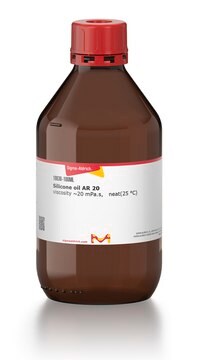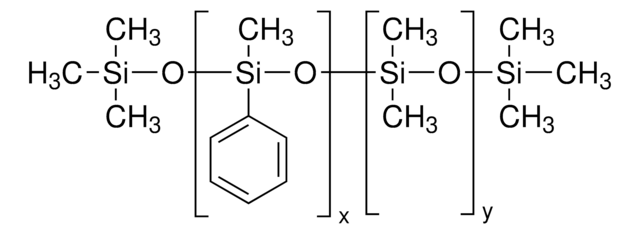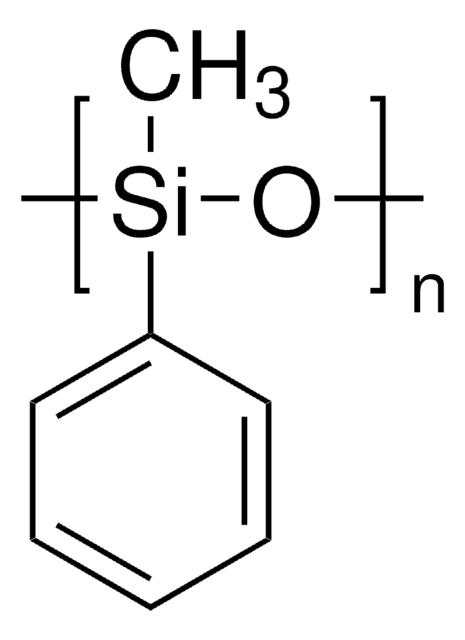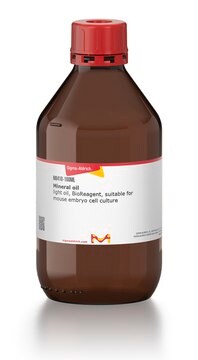10838
Silicone oil AP 100
viscosity ~100 mPa.s, neat(25 °C)
Synonyme(s) :
Polyphenyl-methylsiloxane
Se connecterpour consulter vos tarifs contractuels et ceux de votre entreprise/organisme
About This Item
Produits recommandés
Indice de réfraction
n20/D 1.502
Viscosité
~100 mPa.s, neat(25 °C)
Densité
1.060-1.070 g/mL at 20 °C
Catégories apparentées
Description générale
Silicone oil AP 100 also known as polyphenyl-methylsiloxane (PPMS) is a high viscosity silicone compound that can be prepared by the anionic polymerization process. It has a polydispersity of 1.04, glass transition temperature (Tg) of -50°C and surface tension of 27 nN/m.
Application
Silicone oil AP 100 can be potentially used as a carbon paste binder for the formation of tyrosinase electrode for biosensor applications. It forms a thin layer that facilitates the micro extraction of drugs from human breast milk.
Caractéristiques et avantages
Especially good thermostability (−30-+350°C)
Code de la classe de stockage
10 - Combustible liquids
Classe de danger pour l'eau (WGK)
WGK 3
Point d'éclair (°F)
482.0 °F
Point d'éclair (°C)
250 °C
Équipement de protection individuelle
Eyeshields, Gloves
Faites votre choix parmi les versions les plus récentes :
Déjà en possession de ce produit ?
Retrouvez la documentation relative aux produits que vous avez récemment achetés dans la Bibliothèque de documents.
Les clients ont également consulté
Experimental measurement of forces and energies associated with capillary rise in a vertical tube
Extrand CW and Moon SI
Journal of Colloid and Interface Science, 407, 488-492 (2013)
Liquid-phase microextraction of drugs from human breast milk
Bjorhovde A, et al.
Analytica Chimica Acta, 491(3), 151-161 (2003)
Influence of casting solvent on phenyl ordering at the surface of spin cast polymer thin films
Myers JN, et al.
Journal of Colloid and Interface Science, 423, 60-66 (2014)
Improved selective electrocatalytic oxidation of phenols by tyrosinase-based carbon paste electrode biosensor
Rogers KR, et al.
Electrochimica Acta, 45, 4373-4379 (2000)
Gema Flores et al.
Journal of chromatography. A, 1153(1-2), 29-35 (2007-02-20)
A method based on the use of absorbents as packing materials in the interface of the direct coupling between reversed phase liquid chromatography and gas chromatography (RPLC-GC) is proposed. To that end, a comparative study on different adsorbents and absorbents
Notre équipe de scientifiques dispose d'une expérience dans tous les secteurs de la recherche, notamment en sciences de la vie, science des matériaux, synthèse chimique, chromatographie, analyse et dans de nombreux autres domaines..
Contacter notre Service technique







